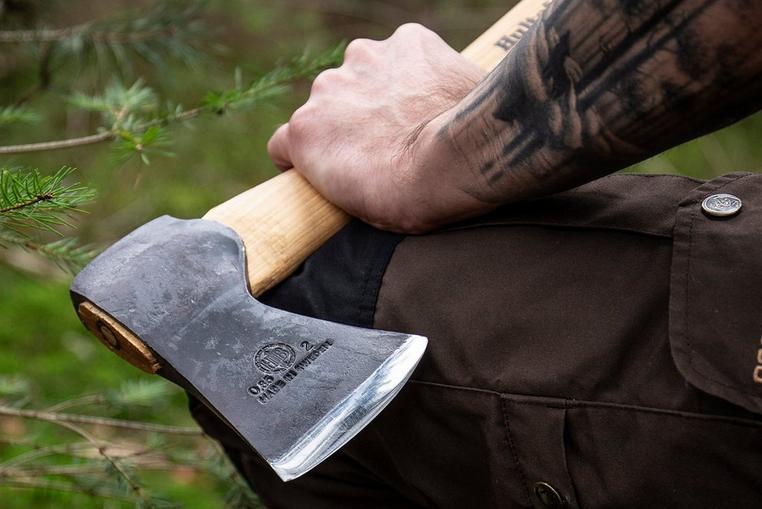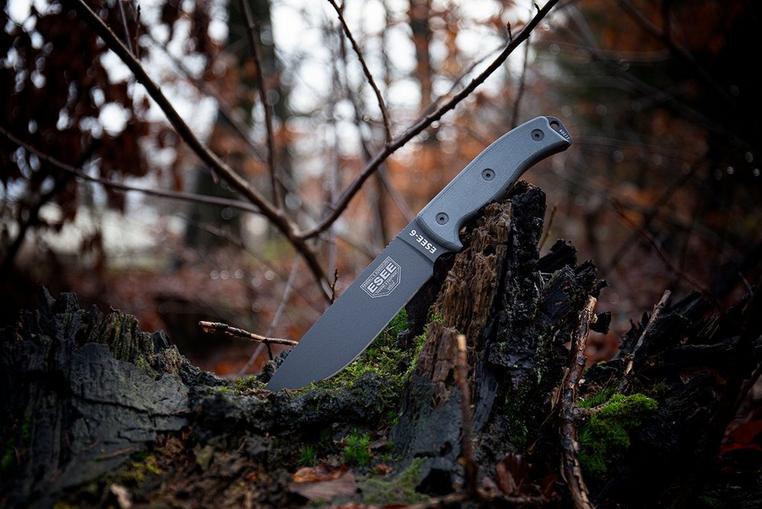Batoning with a fixed knife
You often see it in YouTube reviews: batoning with a fixed knife. Large and small knives are 'violently' put to the test. But is that a good idea? Why would a knife be able to handle this, or not? We explain!
What is batoning?
Batoning is splitting a piece of wood by hitting another piece of wood (the baton) on the knife. The knife is used as a wedge. As such you can easily end up with small pieces of wood for wood carving projects and for lighting fires.
A knife is not the best tool!
It is important to know that a knife is not the best tool to split wood. An axe is namely much better suited for this task. Because of its construction, where you use the length of the handle and the weight of the head to build momentum, you can easily split even the most tough types of wood. When batoning everything relies on muscle power.
So why would you still baton wood?
Batoning as a technique is indispensable during survival situations. During these situations you namely don't decide whether you have an axe around or not. Or you are limited by the maximum amount of weight you can take with you. That is when it comes in handy to master the technique, and carry a knife you can actually use for the job.
Strangely enough many videos and articles about bushcraft often contain batoning. Strange really. Compared to survival situations with bushcraft you namely decide yourself to head into nature. As such you also decide what to take with you. An axe should then be a part of your basic equipment.
Can all fixed knives be used to baton wood?
In short: no. There are enough fixed knives that, because of their design, construction or use of materials, are not built to withstand the stress that batoning accompanies. A blade could, for instance, be enhanced with a thin grind. Great as a hunting knife, not so great when you want it to function as an axe. We're mainly talking hollow-grind knives here, exceptions excluded.
Many carbon steel blades can withstand a beating. Corrosion resistant types of steel, however, have a little more trouble absorbing the impact. One thing always applies: the knife needs to be thick enough. As a rule of thumb we would like to work with a blade thickness of at least 3 mm to make sure the knife stays in one piece. And it needs to be a full-tang knife. It is simply the strongest.
By the way! Batoning with a pocket knife is always a bad idea! It doesn't matter how strong the pocket knife looks. The lock and hinge construction simply cannot handle it, and it is the recipe to get rid of your fingers
Batoning and warranty
We often see that the batoning went wrong. That a piece of the edge broke off. We understand that it must hurt, but it is often not a part of the warranty. You namely ask a knife, a cutting tool, to split wood. Not something a knife was designed to do. It is therefore considered to be 'abuse'. In many cases you have a warranty on material and manufacturing defects. Not when it comes to damages after use or wear and tear. There are, of course, exceptions: some manufacturers design knives to also be able to baton wood in a survival situation. And a company like ESEE gives out a lifelong warranty on almost anything.
And even when you expect a knife will be able to handle it, something can still go wrong. You could, for instance, come across a rock-solid knot. Or a nail, bullet point or stone. Also remember that if wood has been lying on the ground it will often contain sand or small rocks. Not that great for your edge. That edge is namely also a 'resource'. By batoning you 'waste' the sharpness of your edge, which you also could have used for something else.
Which knives are great for batoning?
There are also knives we know will be great for batoning wood. We made a list of a couple of them. Please note: these are only knives which we believe are good at batoning. Warranty conditions are not taken into account here.
Conclusion
We hope this information has taught you more about what you can expect when batoning wood. Our advice: bring an axe. Better safe than sorry!





























?%24center=center&%24poi=poi&%24product-image%24=&fmt=auto&h=500&poi=%7B%24this.metadata.pointOfInterest.x%7D%2C%7B%24this.metadata.pointOfInterest.y%7D%2C%7B%24this.metadata.pointOfInterest.w%7D%2C%7B%24this.metadata.pointOfInterest.h%7D&scaleFit=%7B%28%24this.metadata.pointOfInterest%29%3F%24poi%3A%24center%7D&sm=c&w=1208)
?%24center=center&%24poi=poi&%24product-image%24=&fmt=auto&h=500&poi=%7B%24this.metadata.pointOfInterest.x%7D%2C%7B%24this.metadata.pointOfInterest.y%7D%2C%7B%24this.metadata.pointOfInterest.w%7D%2C%7B%24this.metadata.pointOfInterest.h%7D&scaleFit=%7B%28%24this.metadata.pointOfInterest%29%3F%24poi%3A%24center%7D&sm=c&w=1208)